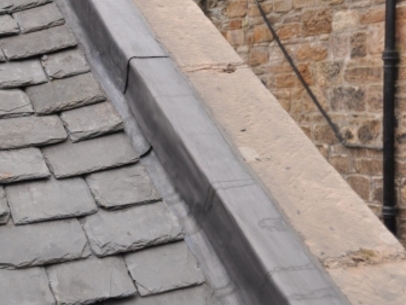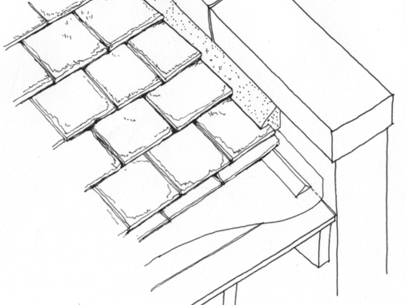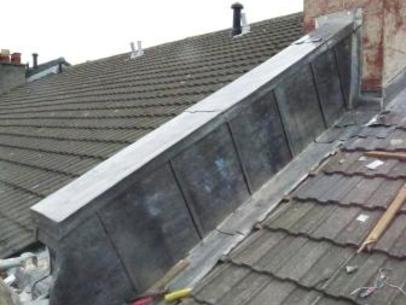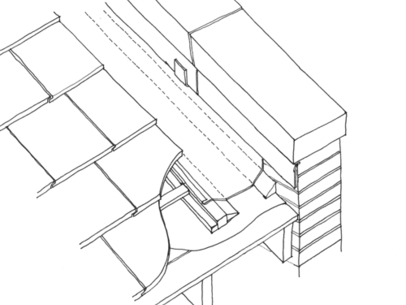Skews
Skews finish the top of the party wall that protrudes above roof level. Skews are also found at gable ends.
Skews divide one tenement roof from another and also act as a firebreak between tenements. They also protect the edge of the slates from being lifted by the wind. Skew stones may be butt-jointed with lime mortar, or partly lapped with the adjacent stone, as this helps to secure them and reduce the risk of water penetration at joints.
As skew stones are set on a sloping surface, they need to be well secured. The 'club skew' is the bottom stone and needs to be securely fixed into the wall as it prevents the other stones from slipping. You may also find this stone referred to as a 'skew back' or 'skew put'.
Problems
Look out for cracks in the skew stones, particularly the club skew, as this could lead to slippage of the skew stones. If there are any signs of this, treat this as an urgent repair. Falling skew stones have killed people.
As the skews are very exposed, mortar can wash away allowing plants to grow. The roots of plants can cause a lot of damage, widening joints and letting water percolate into wallheads.
In some locations, exposed skews can suffer from penetrating dampness.

Keep an eye on the condition of the flashing which covers the join between the skew wall and the roof.

Solutions
- clean out any loose mortar or plant growth from skew joints and repoint with a lime mortar
- consider capping exposed skews with lead or installing a lead undercloak under the top stones
- secure club skews with stainless steel pins (essential if you have a lead undercloak)


Professional help recommended?
Although the work may appear straightforward, ensure your builder or tradespeople have the skills for the job. If in any doubt, get professional help to specify and organise the repair.
Who pays?
Roof repairs are normally a common responsibility.
Further information